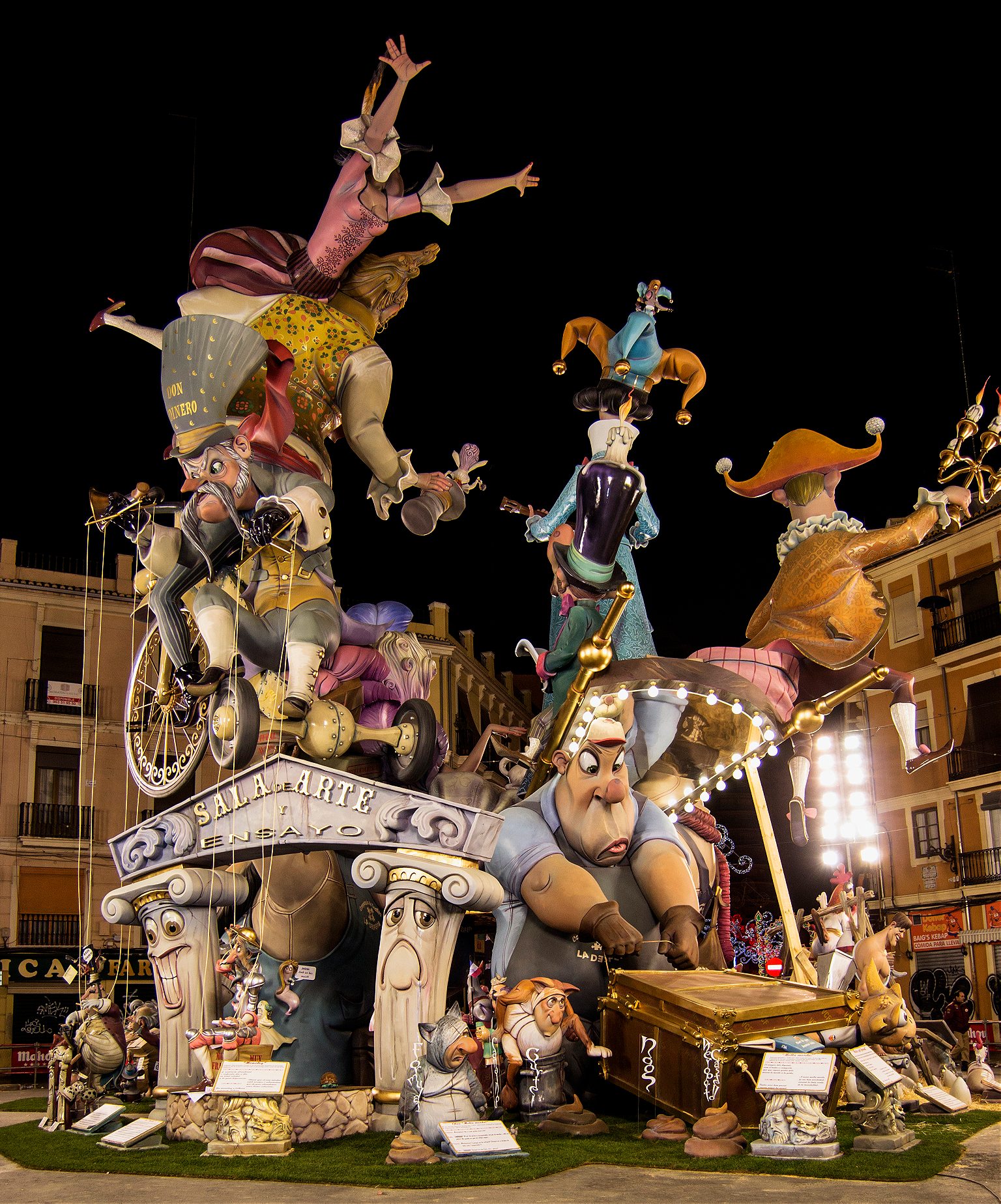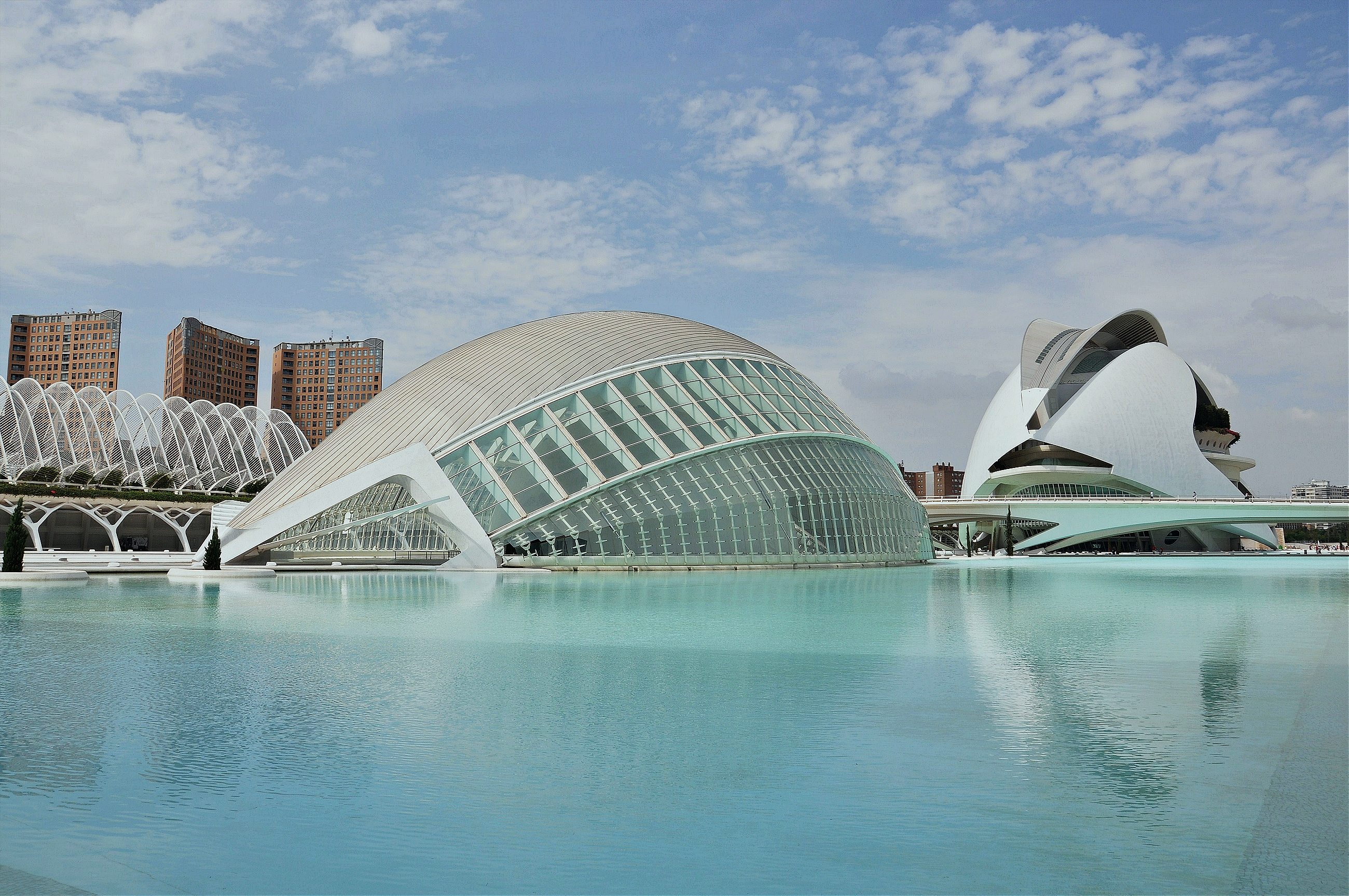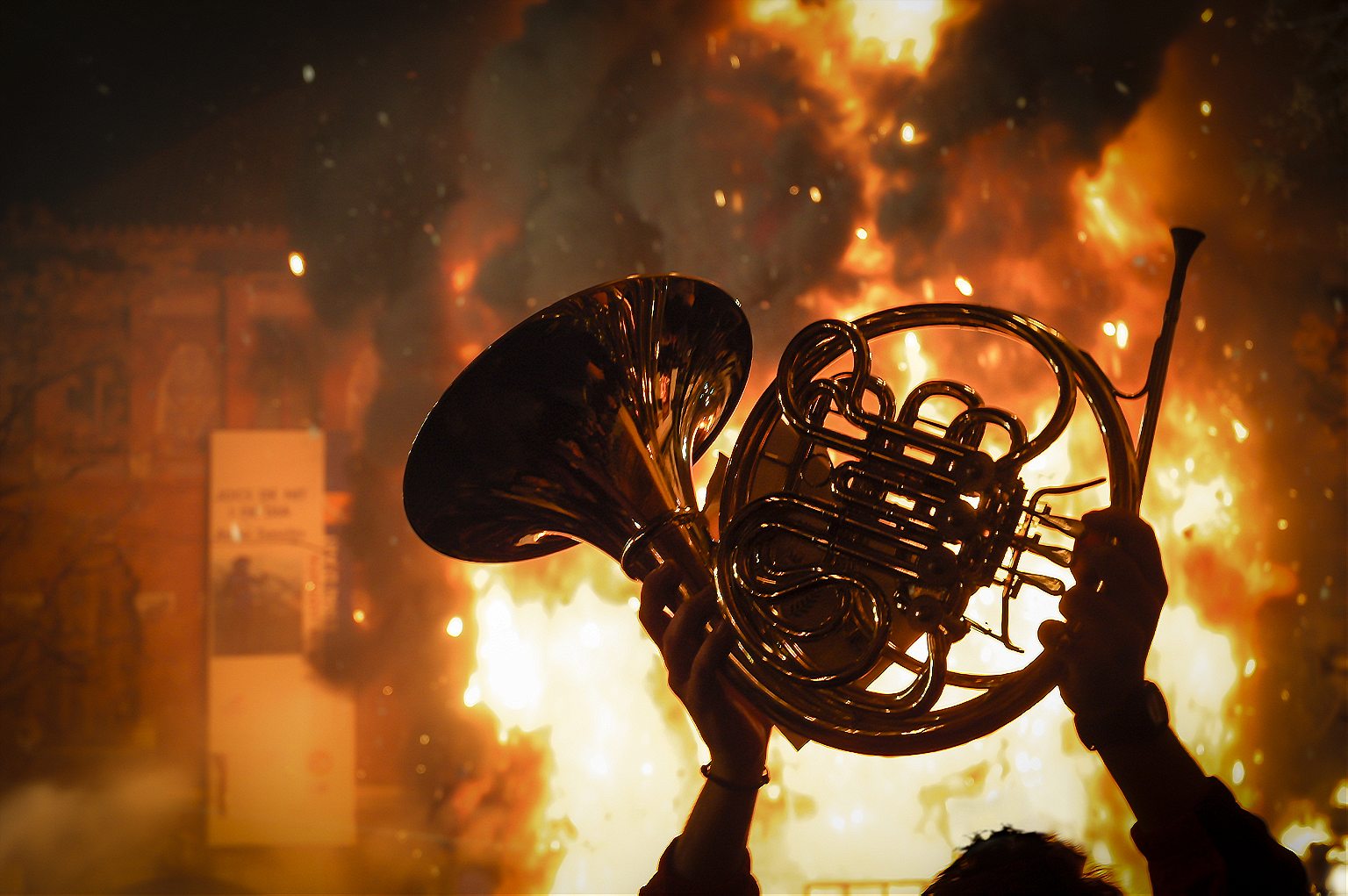From paella to pyrotechnics, here’s how to travel well in Spain’s often-overlooked third city.

Embrace the Mediterranean way of life, for better and for worse. A gentle sea breeze and fair weather. Sunbathers on the beach nearly all year long. Sip a local wine, snack on olives, enjoy your mid-afternoon siesta. Valencians live a quintessentially Mediterranean lifestyle, and it shapes their culture in big and small ways. While the city beach is inconveniently outside the city center, there is no pleasure quite like enjoying a caña beer, some tapas, and a meandering conversation with friends by the seaside. Of course, Valencia also shares many of the more unfortunate clichés of a Mediterranean way of life. In summer, its beaches and bars are full of hedonistic, day-tripping “guiri” foreigners. Valencians are laid back and informal, and, whether you like it or not, the pace here is often slow. So sit back and relax. There’s no point in being in a rush.

Enjoy the freshness of the Spanish Mediterranean diet. The city is surrounded by “L’horta de València,” fields of orchards and fresh produce that you will hear locals gush about. Definitely take a basket and shop for large, delicious Valencian tomatoes or other seasonal fruits and vegetables at the Mercat Central. Get a taste of the regional “chufa” nut culture by trying the sweet, milky Valencian horchata drink traditionally accompanied by long, glazed fartons pastries. Valencia is a delight for those who love fresh food.

Celebrate Fallas all year long. The Fallas festival is to Valencia what Carnaval is to Rio de Janeiro or Mardi Gras is to New Orleans. It’s a big deal. If you visit in the middle of March, you will see a city transformed by colorful parades, neighborhood festivities, wondrous fireworks, and streets full of flammable, satirical effigies, or falla monuments, that play out local humor, innuendo, and social commentary. But what was once a spring festival of renewal now shapes Valencian life and activities all year long. The neighborhood associations of falleros, called casals, meet in weekly socials and spend the entire year planning the March events. Local Valencian craft industries, above all pyrotechnic engineers, traditional dressmakers, and falla artists, work tirelessly to ensure that next year’s Fallas festival is more impressive and more original than the last.


Don’t mess with Valencians’ pride, which can be both endearing and parochial. Perhaps it’s third-city mentality, forced to always compare oneself with bigger and more cosmopolitan Madrid and Barcelona. Perhaps it’s that Valencia has under-appreciated exceptional foods and festivities and has long been overlooked as a tourist destination. Or it could just be a symptom of Valencians’ agrarian provincialism. Nothing gets a Valencian more excited than discussing the greatness of the local food and Fallas. When talking about Valencia, locals will regularly exclaim in the local dialect that it’s the best in the world, “lo millor del món!”

Don’t forget that paella is from Valencia. Nothing irritates a Valencian gastronome more than the abuse and misuse of the menu label paella valenciana abroad, or even in other parts of Spain. Frustration and outrage has even fueled a Wikipaella project to correct the record. What’s more, paella valenciana is just one of dozens of traditional paella recipes, most notably the seafood paella de marisco and arroz negro, or black rice, a paella cooked in squid’s ink. And paella is part of a much more extensive rice culture that includes arroz al horno, or oven-baked rice; a rice dish cooked in broth, or arroz caldoso; and the rice-stuffed red peppers called pimiento relleno. A word to the wise: if you see a restaurant in a touristy area with the paella pan sitting in its entryway, chances are no local would ever eat there. Try one of the three famous paella arrocería restaurants located at the Malvarrosa city beach.


Take a trip out to L’Albufera. South of Valencia is rice-patty heartland and the Albufera Lake forms a natural lagoon that is central to rice growing there. This national park contains one of the largest natural lakes in Spain and is home to numerous migratory birds. You can take a ride on the lake in a gondola-style boat and have lunch at one of the arrocerías in the lakeside village of El Palmar, known to be among the best and most authentic places to try paella in the world.

Look for the Holy Grail. It may sound like a hoax, but the Valencia Cathedral formally claims that the Holy Chalice on display in a small chapel there is the cup Christ used in the first Eucharist. On the Cathedral’s website they offer a long argument for its authenticity, which can be summarized by three claims: the agate cup’s core dates back to the region and period just before Christ, certain accounts of the Holy Grail place it in Spain and coming to rest in the Valencia Cathedral in the 15th century, and Pope John Paul II celebrated the Eucharist with it on his visit to Valencia on November 8, 1982.

Marvel at the City of Arts and Sciences, but don’t expect locals to. For visitors, the City of Arts and Sciences (CAC) is a postmodern architectural spectacle, and an elegant triumph of the Spanish architect Santiago Calatrava’s signature style. Evoking natural forms, the Ágora arena looks like a giant purple Venus flytrap while the Umbracle sculpture garden resembles the bones of a beached whale. The problem is that the CAC has been a massive drain on public funds, costing many times more than originally promised and promoted by a corrupt government more concerned with investing in high-profile, showy attractions than local infrastructure and social services. Add to this ongoing legal disputes, and many Valencians view the City of Arts and Sciences as a monument to excessively opulent, anti-democratic politics. Tourists can enjoy their selfie with this iconic landmark, but locals feel much more ambivalent about whether it is worth the sticker shock.


Bike through the river. Perhaps the most significant geographical feature of Valencia is the Turia River that bends around the city center, a river that has no water running through it. A devastating flood in 1957, which still very much lives on in locals’ memory, led the city to reroute the flow of the river outside of town. In time (following massive popular pressure) they decided to convert the now-dry riverbed into a magnificent urban park, divided into thematic gardening sections, including soccer fields, exercise stations, and extensive running trails, not to mention the Palau de la Música and City of Arts and Sciences. The bike trails link up nicely with bike lines in the city center, which is why bike-enthusiast locals sometimes refer to the Turia Riverbed Park as a bike highway for getting from one side of town to another without car traffic.

Don’t pack an umbrella, because it’s always sunny in Valencia. And maybe this is why Valencians can get hysterical about even just a little bit of rain. I’ve seen otherwise respectable full-grown adults run for shelter like little kids at the drop of rain. I’ve seen drivers pull over to the side of the road when it starts to pour. Valencians don’t tolerate getting even a little wet.

Let loose your inner pyromaniac. The Spanish company Kukuxumusu is popular for creating merchandise with satirical comics that highlight regional quirks and famous local icons. Its image for Valencia is a mischievous fallero mouse lighting the tail of a startled bull on fire. Why is this funny? Because Valencians love fire. Fireworks are in their blood. Fallas is a festival of fire, culminating in la nit de la cremà, the night of bonfires. In the months leading up to Fallas, the streets of the city sound like a war zone, as Valencians toss more firecrackers (“petardos”) than you could imagine. Major events in the city are marked by the explosion of the mascletà, a locally popular sound-fireworks show. Even Valencian weddings traditionally have, you guessed it, a string of firecrackers, or “traca,” which is set off in honor of the bride and groom.


Experience the fiery summer night life. One local tradition definitely worth experiencing is the San Juan bonfire festival, celebrated along Spain’s Mediterranean coast every June 23rd. Groups of friends head to the beach in the evening, build bonfires, and then at midnight, depending on their local lore, they either jump repeatedly over the bonfires or over sea waves. The convivial spirit in the air is magical. Even if you miss San Juan, summer nights at a beach club in Valencia are a blast, which is why college students from all over Europe flock here for drinks and beachside clubbing.

Pick up some oranges, but not from the trees. For many Americans, the name “Valencia” is most associated with the common variety of oranges. Indeed, Valencia has a long history of citrus production, and continues to grow delicious oranges and clementines in the valleys nearby to the south. That is why you might be surprised to know that “Valencia Oranges” are named for the southern California town of Valencia, where the variety was first created. Still, oranges are central to Valencian culture. They appear in the decorative tiles of major landmarks, and orange trees line many of the major avenues of the city, a site that is beautiful to see when they bear fruit in the late fall. But visitors beware: the oranges that grow on those street trees are not edible, so please don’t pick them!

Skip the bull and buy ceramics. Everyone who visits Spain sees the iconic Osborne bull outline all over tourist merchandising. But if you are looking for a truly local souvenir or gift from Valencia, consider the traditional azulejos decorative tiles. Valencia has a long tradition of ceramics guilds and there are artisanal ceramics shops that sell historical reproductions of medieval pots and tiles. Valencia is known for three styles in particular: the “socarrat,” or burnt clay tiles, and the “gótico azul” blue ceramics and “verde y morado” green-glazed tiles. You can find them with traditional medieval iconography or named professions, and they make great gifts. Visit the Museo Nacional de Cerámica y Artes Suntuarias located in the Marqués de dos Aguas Palace, to learn more about its history.


Go batty for Valencia’s rich Medieval past. You’ll see it on manhole covers. You’ll see it in the official Valencian emblem and the local football club seal. “Lo Rat Penat,” Valencian for “flying rat” or bat, is a famous icon from the Aragon King Jaume I, who liberated Valencia from the Moors in 1238. Legend has it that a bat helped to warn Jaume I of a surprise attack, and thus helped him to victory, converting this common Valencian mammal into a local iconic symbol. Lo Rat Penat is also the name of a cultural society that seeks to defend regional culture and the Valencian language.

Be careful not to confuse being Valencian with being Catalan. Yes, Valencians speak a dialect of Catalan. But, no, Valencia is not part of the Catalan region and, according to many residents here, their language, Valencià, is not Català. Officially, Valencians consider Valencian to be a distinct language. Linguists, and anyone who listens objectively to the two, will assure you that both Valencian and Catalan are dialects of the Catalan language. (You should never confuse either of them with Spanish, which is universally agreed to be a separate language.) The politics over these languages are really politics about cultural identity and autonomy. A loud minority of Valencians resent being lumped in with Catalans. Recommendation: tread lightly if this topic arises. When in doubt, pander to their local pride.
Top image by: WorldAroundTrip